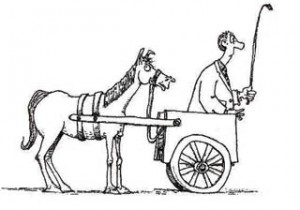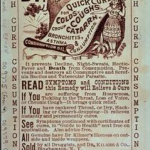 A year or so ago UAA Nursing Students decided to put the question of whether the recommended daily allowance (RDA) of Vitamin D would produce adequate blood levels to the test and found that the RDA came nowhere close to ensuring adequate Vitamin D. Alaskan doctors are now suggesting 4000 IU daily (combined with Magnesium and Calcium) while many foolish Alaskans complain or suffer from the conditions listed below and do nothing about it.
A year or so ago UAA Nursing Students decided to put the question of whether the recommended daily allowance (RDA) of Vitamin D would produce adequate blood levels to the test and found that the RDA came nowhere close to ensuring adequate Vitamin D. Alaskan doctors are now suggesting 4000 IU daily (combined with Magnesium and Calcium) while many foolish Alaskans complain or suffer from the conditions listed below and do nothing about it.
Now a Republican Alaska State Senator has announced he is interested in doing something about this. Senator Seaton wants to test newborns for Vitamin D, while the Republican Administration dismisses concerns over the impact of inadequate Vitamin D. HB90 would create a “temporary” program for testing newborns at delivery. The text of the Bill and the Sponsor statement (available here) is well worth the read.
A big problem, however, is that Alaska hospitals have made a habit out of turning parents of newborns into criminals as they surreptitiously turn maternal blood test results over to OCS and State police over even the legal presence of anything “suspicious” in the blood, and let’s face it, Seaton’s colleagues seem much more interested in regulating wombs and criminalizing female behavior than in addressing any health care issue. Moreover, it would clearly be more important from all perspectives to have pre-natal data from pregnant mothers than on new born children, but Alaska is certainly not interested in ensuring that all women have adequate prenatal care.
The wing nut right fail to see this as one might argue the GOP caucus does (as a way to seize further control of women) and look at it instead through delusional Lockean glasses, arguing that Seaton is intruding into the individual’s privacy and that the legislature has no business addressing public health issues (except when it is someone else.) Of course, this is in no small part because though they scream and yell that we should be complying with the Constitution, they have never read that document (save perhaps to support amending same to fund religious schools.) The Constitution mandates 1 that the Legislature must address the general health and welfare, which is clearly challenged by the gross inadequacy of Vitamin D.
What a mess! We seem to have an unholy alliance of liberals and conservatives to wrest control of pre and post natal care from parents while failing to really acknowledge the underlying health issues facing Alaskans and the need to boldly address same (Governor Sean Parnell, is even an embarrassment to Governor Brewer, who finally admitted that her state needs to get onboard with the ACA.) The GOP legislative caucuses are VERY busy rushing ALEC based repressive legislation in to law, and really can’t be bother with health policy.
So we all have a dilemma, here in the far north. Is Senator Seaton et al really concerned about the health of Alaskans, or are they merely looking for a way to ensure that all mothers get drug tested? The shortsighted nature of the policy and the questionable ethics of the caucus suggests that one look beyond the purported purpose of the Bill, but is Seaton really that much of a prat? Well…….
Impacts of a Vitamin D deficiency 2
1.) The flu – In a study published in the Cambridge Journals, it was discovered that vitamin D deficiency predisposes children to respiratory diseases. An intervention study conducted showed that vitamin D reduces the incidence of respiratory infections in children.
2.) Muscle weakness – According to Michael F. Holick, a leading vitamin D expert, muscle weakness is usually caused by vitamin D deficiency because for skeletal muscles to function properly, their vitamin D receptors must be sustained by vitamin D.
3.) Psoriasis – In a study published by the UK PubMed central, it was discovered that synthetic vitamin D analogues were found useful in the treatment of psoriasis.
4.) Chronic kidney disease – According to Holick, patients with advanced chronic kidney diseases (especially those requiring dialysis) are unable to make the active form of vitamin D. These individuals need to take 1,25-dihydroxyvitamin D3 or one of its calcemic analogues to support calcium metabolism, decrease the risk of renal bone disease and regulate parathyroid hormone levels.
5.) Diabetes – A study conducted in Finland was featured in Lancet.com in which 10,366 children were given 2000 international units (IU)/day of vitamin D3 per day during their first day of life. The children were monitored for 31 years and in all of them, the risk of type 1 diabetes was reduced by 80 percent.
6.) Asthma – Vitamin D may reduce the severity of asthma attacks. Research conducted in Japan revealed that asthma attacks in school children were significantly lowered in those subjects taking a daily vitamin D supplement of 1200 IU a day.
7.) Periodontal disease – Those suffering from this chronic gum disease that causes swelling and bleeding gums should consider raising their vitamin D levels to produce defensins and cathelicidin, compounds that contain microbial properties and lower the number of bacteria in the mouth.
8.) Cardiovascular disease – Congestive heart failure is associated with vitamin D deficiency. Research conducted at Harvard University among nurses found that women with low vitamin D levels (17 ng/m [42 nmol/L]) had a 67 percent increased risk of developing hypertension.
9.) Schizophrenia and Depression – These disorders have been linked to vitamin D deficiency. In a study, it was discovered that maintaining sufficient vitamin D among pregnant women and during childhood was necessary to satisfy the vitamin D receptor in the brain integral for brain development and mental function maintenance in later life.
10.) Cancer – Researchers at Georgetown University Medical Center in Washington DC discovered a connection between high vitamin D intake and reduced risk of breast cancer. These findings, presented at the American Association for Cancer Research, revealed that increased doses of the sunshine vitamin were linked to a 75 percent reduction in overall cancer growth and 50 percent reduction in tumor cases among those already having the disease. Of interest was the capacity of vitamin supplementation to help control the development and growth of breast cancer specially estrogen-sensitive breast cancer.
1 Alaska Constitution Article 7 http://ltgov.alaska.gov/treadwell/services/alaska-constitution/article-viiA096A0health-education-and-welfare.html
2 Geib, Aurora. “The 10 symptoms of vitamin D deficiency you need to recognize” Natural News, 2/10/2012 Web http://www.naturalnews.com/035089_vitamin_D_deficiency_signs_symptoms.html


 A year or so ago UAA Nursing Students decided to put the question of whether the recommended daily allowance (RDA) of Vitamin D would produce adequate blood levels to the test and found that the RDA came nowhere close to ensuring adequate Vitamin D. Alaskan doctors are now suggesting 4000 IU daily (combined with Magnesium and Calcium) while many foolish Alaskans complain or suffer from the conditions
A year or so ago UAA Nursing Students decided to put the question of whether the recommended daily allowance (RDA) of Vitamin D would produce adequate blood levels to the test and found that the RDA came nowhere close to ensuring adequate Vitamin D. Alaskan doctors are now suggesting 4000 IU daily (combined with Magnesium and Calcium) while many foolish Alaskans complain or suffer from the conditions  Dr. Gabor Maté argued to Alaska that, “The first question in addiction is not why the addiction, but why the pain? And if you understand a human being’s pain, you cannot look at their genes.” You can listen to his presentation at
Dr. Gabor Maté argued to Alaska that, “The first question in addiction is not why the addiction, but why the pain? And if you understand a human being’s pain, you cannot look at their genes.” You can listen to his presentation at 
